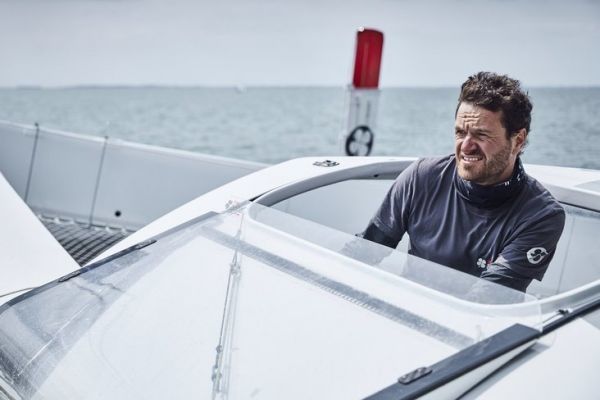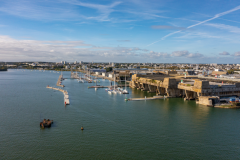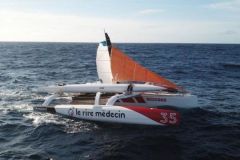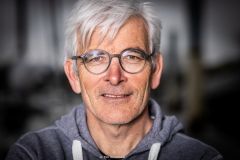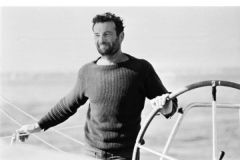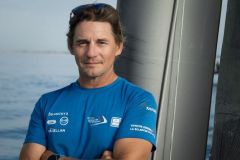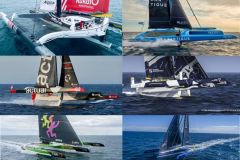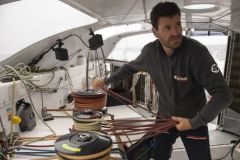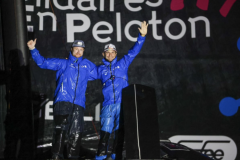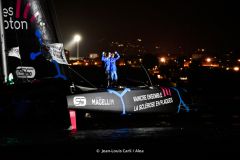Newly arrived at the helm of Actual's Ultim, Anthony Marchand will be racing his first major race under these colors. He answers our questions.
You became skipper of the Actual Ultim 3 trimaran in January 2023, taking over from Yves le Blevec. How did your first few months at the helm go?
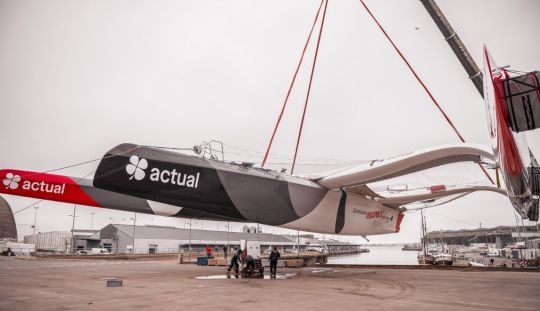
The trimaran underwent a major winter refit. We put the boat back in the water in April, and then went on sailing to prepare for the Transat Jacques Vabre, then the Arkea Ultim Challenge-Brest. We won the Armen Race Uship in May, then I completed my solo qualification for the Arkea Ultim Challenge-Brest, a round trip between Trinité-sur-Mer and the Azores, which represents 2,700 miles of sailing.
Yves is still at the head of the project, and brings us his immense experience in progress and optimization.
What changes did the team make to the boat during the winter refit?
These ideas were launched when Yves was still skipper. In these projects, we always think about the future. We tried to fill the gaps left by the competition.
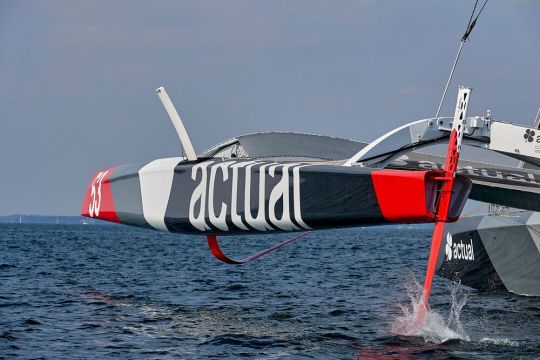
The biggest evolution is the change of foils. The idea of developing a pair of foils was launched just before the Route du Rhum. We spent a year calculating and structuring. We kept the wells so that we could eventually put the old foils back in.
Nevertheless, it's still a big operation, and we don't change foils according to weather conditions, as can be the case on the America's Cup.
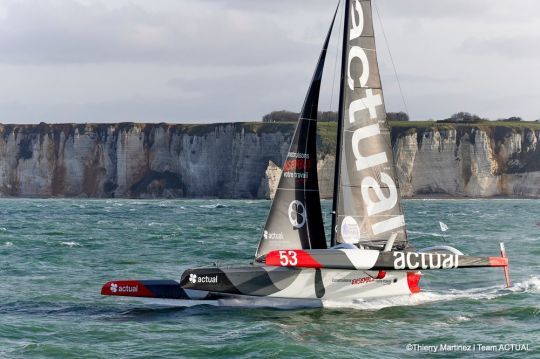
Actual Ultim 3 is now equipped with a pair of larger foils, with greater span and less drag. The aim is to take off a little earlier and have more versatility.
Were these foils made in-house?
These are 100% Morbihan appendages. The design is by VPLP, JC Design made the calculations, and Avel Robotics took care of the production.
What are the other changes?
We've also changed the set of sails, which is a guarantee of reliability for future events. We're always on the lookout for new shapes and materials
We also installed a hydraulic edge. We installed a large cylinder in the bome, which was designed and manufactured in-house. The stresses are enormous on the curb, so it was a big job.
You have a great deal of experience in multihulls, whether ORMA or Ultim. But above all, you've done a lot of Figaro racing. How do you go from a one-design to an Ultim?
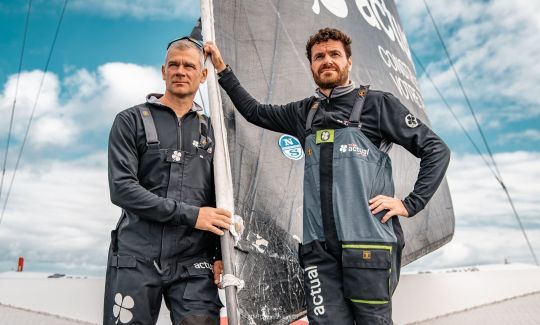
A boat is still a boat, it's still a regatta. I come from the Figaro school, so we want to surround ourselves with fellow Figaro racers to carry out our projects. We share a common philosophy. That's why I'm leaving with Thierry Chabagny, who has a lot of experience in contact racing, which will certainly be the case on this crossing, which should last between 15 and 16 days.
Most of the time, surrounding yourself with a figarist is a guarantee of success.
After the Jacques Vabre, you'll be following up with the Arkea Ultim Challenge-Brest. Your boat is one of the few to have completed a round-the-world race. Do you consider yourself an outsider?
Indeed, the platform is super reliable. Nevertheless, the level within the class is very high. The other Ultims gave up on Jules Verne attempts, so in a different context, which was to fight against a stopwatch. You give up much more easily on a Jules Verne. On the Arkea Ultim Challenge-Brest, technical stopovers will be authorized. The exercise is radically different.

